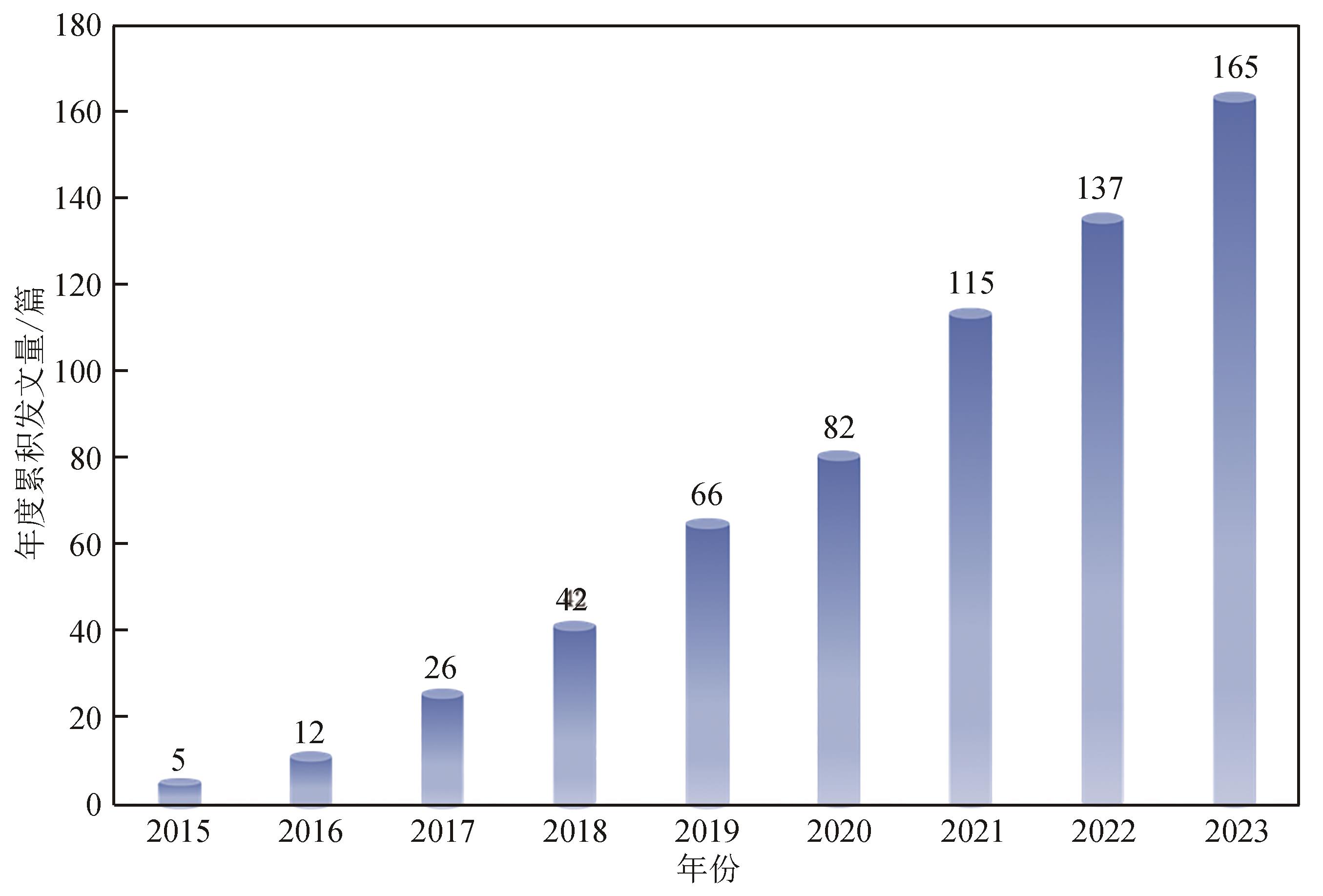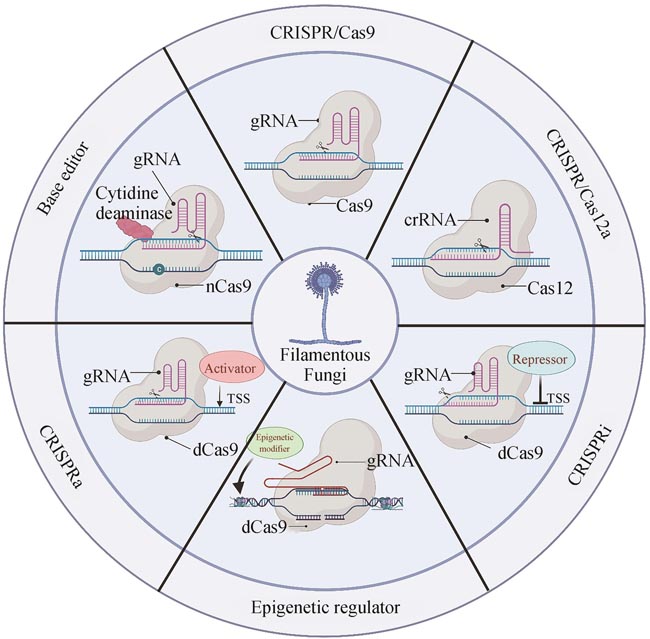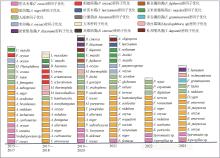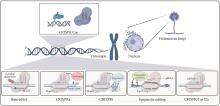|
||
|
CRISPR/Cas systems and their applications in gene editing with filamentous fungi
Synthetic Biology Journal
2024, 5 (3):
672-693.
DOI: 10.12211/2096-8280.2023-097
Filamentous fungi, which present distinct morphology and cell structure, play a critical role in human health as well as industrial and agricultural production. However, the unique characteristics of filamentous fungi make them difficult to be manipulated with traditional genetic engineering methods. Thus, the development of an efficient gene editing system is essential for exploring biological resources and understanding metabolic processes in filamentous fungi. The development of the Clustered Regularly Interspaced Short Palindromic Repeats/CRISPR associated protein (CRISPR/Cas) system promotes more efficient and effective gene editing in different species, and brings a revolutionary breakthrough in fungal fundamental research and applications. In this review, we first briefly introduce the history, working mechanism, and classifications of the CRISPR/Cas mediated gene editing system. Next, we comment the functional components of CRISPR/Cas9 such as selective marker, Cas9 and gRNA and the delivery methods of these components in various filamentous fungi. Furthermore, we systematically discuss the applications of CRISPR related technologies, including CRISPR/Cas12, base-editor, CRISPRa, CRISPRi and CRISPR mediated epigenetic regulation, in the genetic engineering of filamentous fungi, particularly in marine-derived filamentous fungi. Finally, we address challenges with relative low gene editing efficiency and off-targets effects in engineering filamentous fungi, and highlight the potential solutions for developing novel CRISPR/Cas-based gene editing systems. This review can provide guidance for developing an efficient gene editing platform in filamentous fungi and pave the way for further exploration of the secondary metabolites and establishment of robust fungal cell factories.

Fig. 1
Number of research papers related to the application of CRISPR/Cas in filamentous fungi
Extracts from the Article
基因编辑(gene editing)是指可以在基因组水平上对靶标DNA序列定点改造的遗传操作技术,是基因功能研究与遗传改造重要的手段,可为探究真菌生理特性、细胞工厂改造、次级代谢物挖掘等提供重要的技术支持。丝状真菌由于更为复杂的遗传背景、多变的形态以及较厚的细胞壁,对其的基因编辑要比对酵母的难度大且展开得较晚。早期,研究者主要采用同源重组介导的基因打靶技术对丝状真菌进行基因编辑,但是在非模式菌株中,同源重组的效率极低,且存在较多的非特异性编辑,严重限制了该技术的应用。近年来,各种人工核酸内切酶(engineered endo-nuclease,EEN)的应用,极大地提高了丝状真菌中的基因编辑效率。EEN主要包括锌指核酸酶(zinc finger nuclease,ZFN)、转录激活因子样效应物核酸酶 (transcription activator-like effector nuclease,TALEN)、规律性成簇间隔的短回文重复序列 (clustered regularly interspaced short palindromic repeats,CRISPR)及相关蛋白(CRISPR/Cas)系统[6-8]。其中,ZFN和TALEN技术是通过DNA结合蛋白与核酸内切酶FokⅠ组成蛋白复合物对靶点进行特异性的识别和切割。由于ZFN和TALEN技术操作过程烦琐,且对操作技术要求很高,因而普适性较低。CRISPR/Cas系统具有设计简单、特异性强、效率高等优点,迅速在丝状真菌中得到广泛应用(图1)。本文简要综述了CRISPR/Cas系统的类型和作用机理,详细总结了现有丝状真菌中CRISPR/Cas9功能组分和应用情况,并重点围绕新兴CRISPR技术、海洋真菌应用等方面介绍其进展,最后,对该技术可能出现的问题及应用前景进行了展望,以期为不同类型的丝状真菌基因编辑研究提供参考。
CRISPR/Cas系统一经开发,便迅速风靡全球,因其能够实现高度灵活和特异性的靶向基因编辑,赢得了全世界科学家的热切关注并对其进行各种巧妙的改造和升级,在生命科学和医学研究的各个领域都展现出巨大的应用前景。自2015年起,CRISPR/Cas系统陆续被应用于各种丝状真菌中,极大地促进丝状真菌基因功能分析和遗传改良研究,并对丝状真菌沉默次级代谢产物的挖掘和合成生物学的发展起着非常重要作用。至今,CRISPR/Cas在丝状真菌中的相关研究论文已从最初的5篇上涨到160多篇(图1)。但是,相比当前20 000多篇的CRISPR/Cas相关研究论文,CRISPR/Cas在丝状真菌的应用进展仍相对缓慢,很可能是因为不同种属的丝状真菌遗传背景差异较大,尤其是各种特殊生境来源的野生菌株,人们对其细胞结构、代谢调控、防御机制等生理功能认识有限,难以建立在各种真菌中通用的CRISPR/Cas 编辑体系。
Other Images/Table from this Article
|


